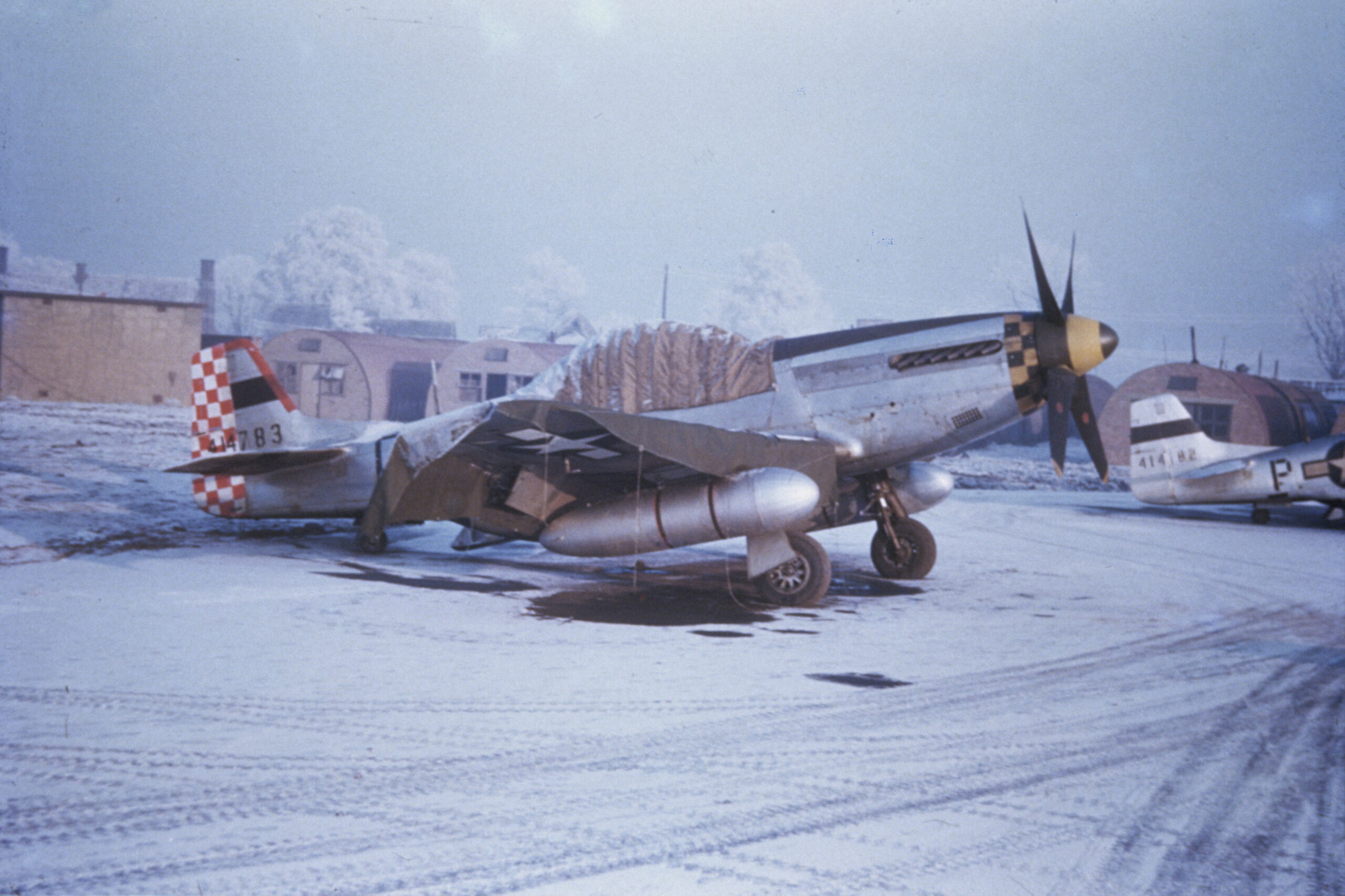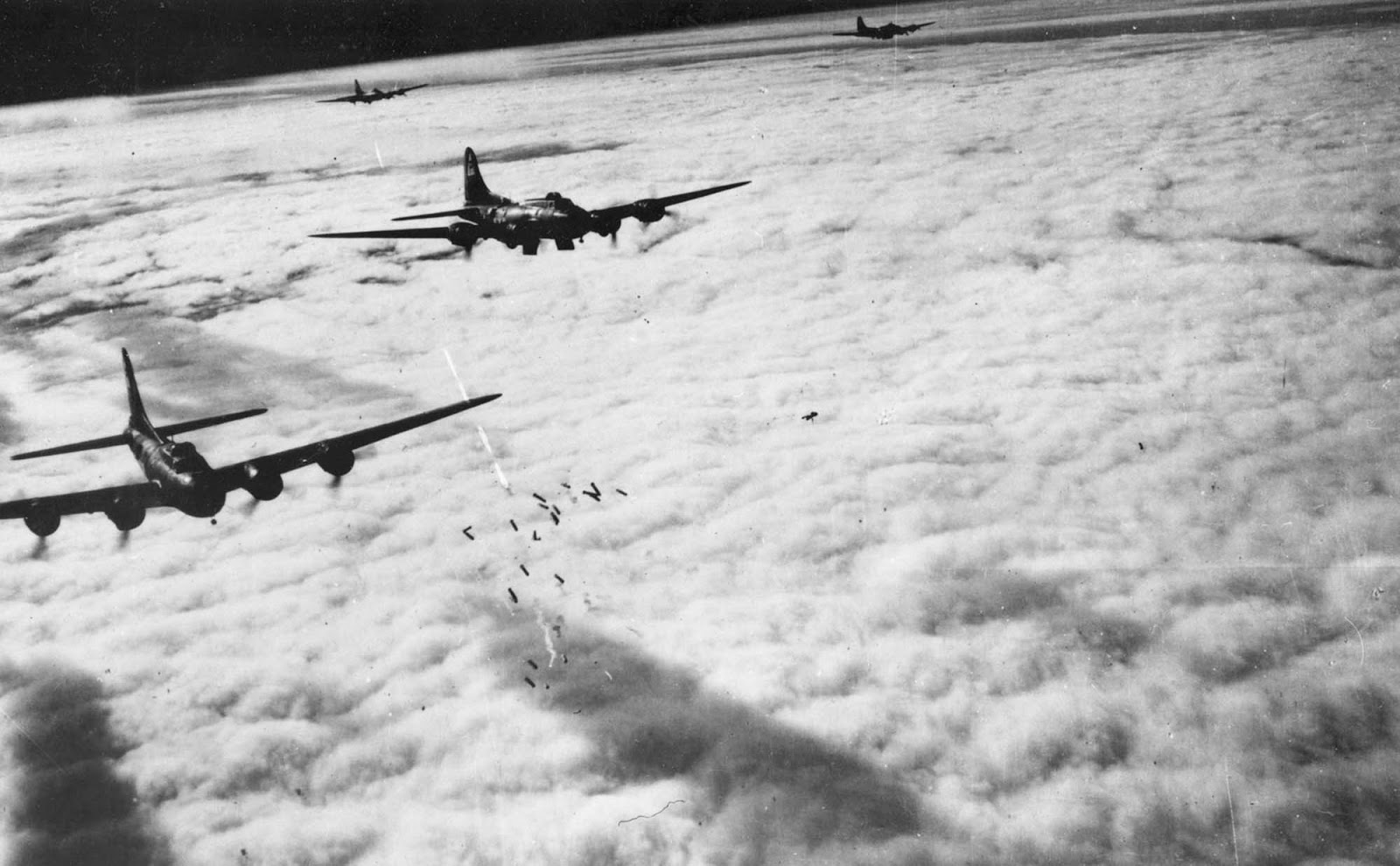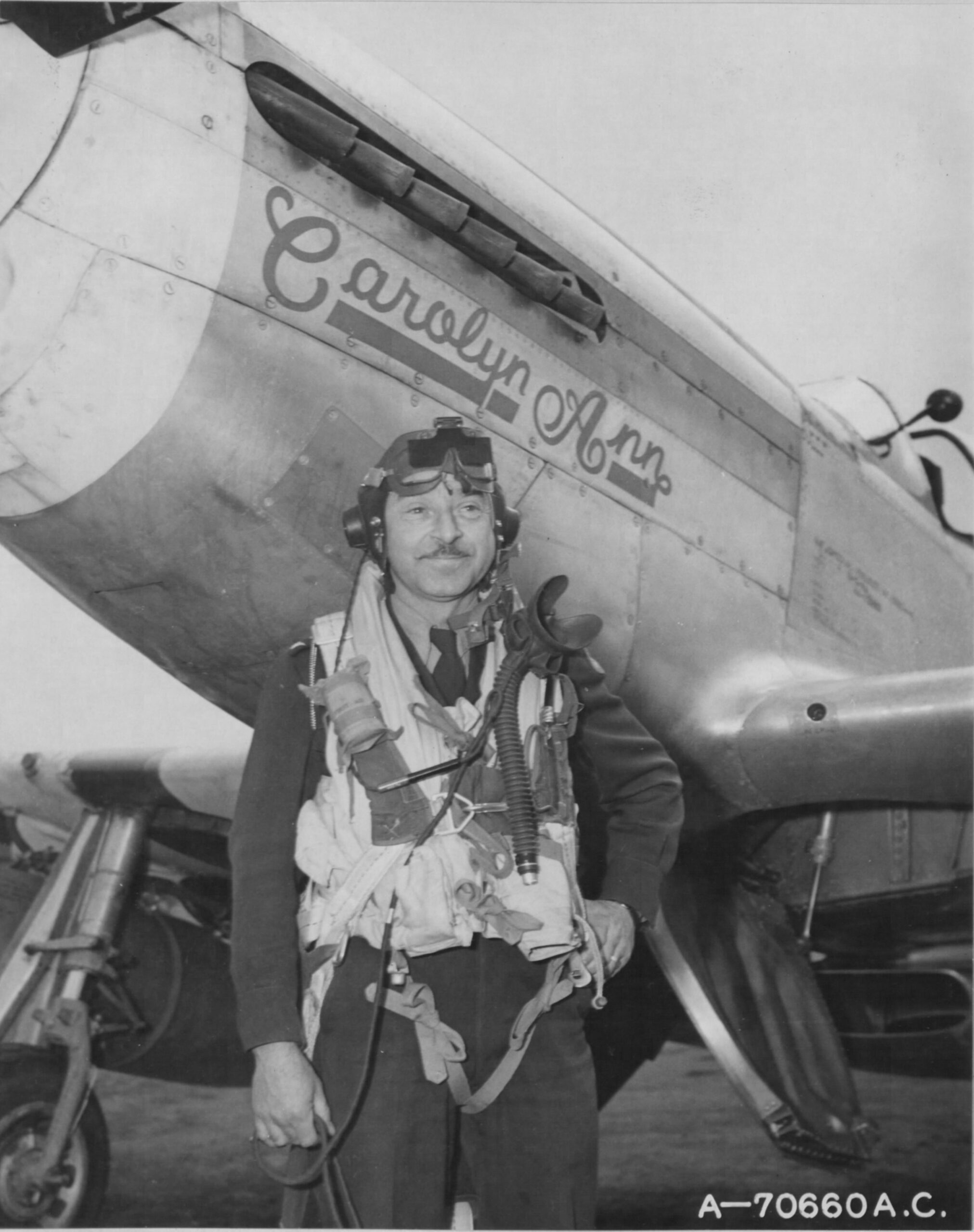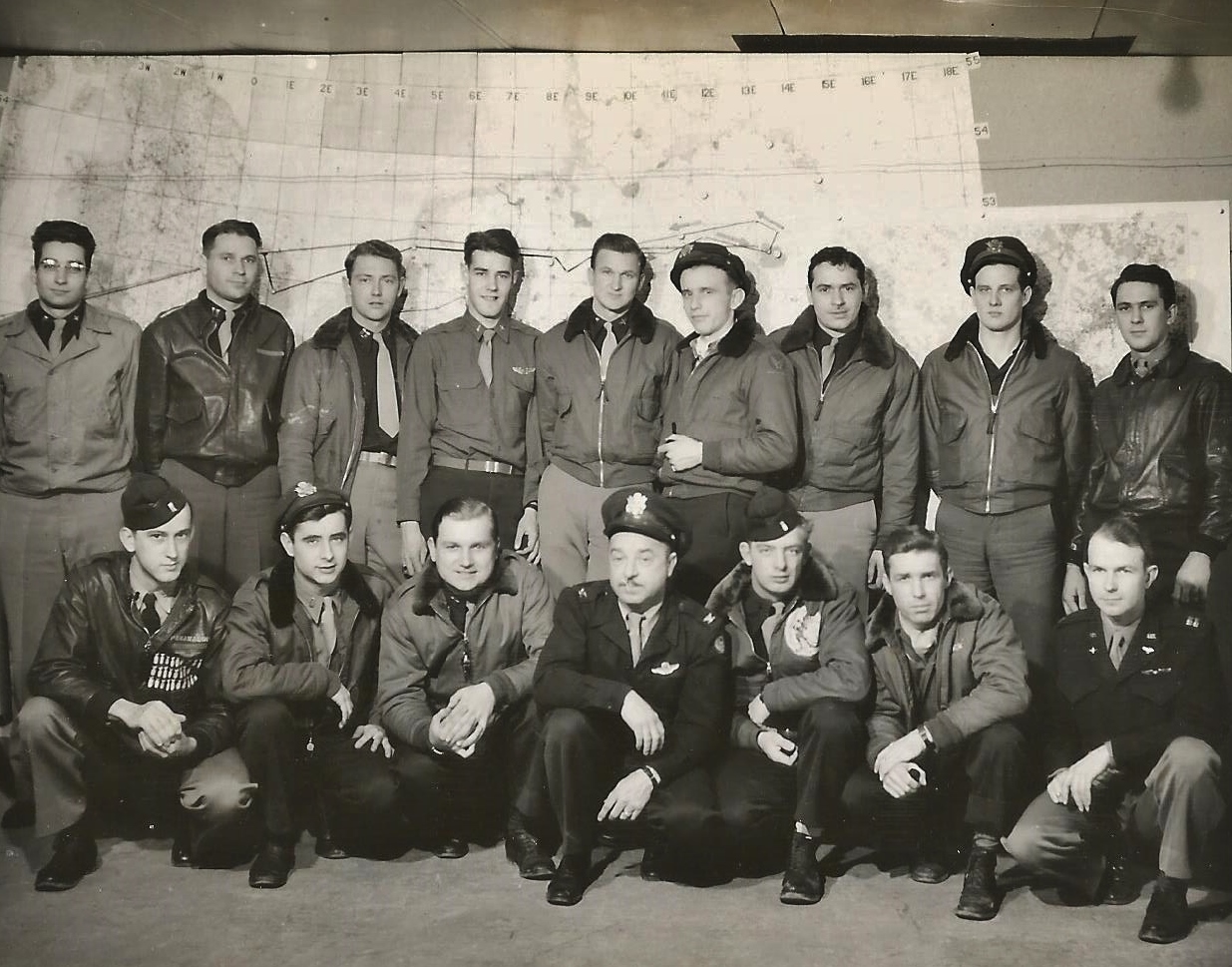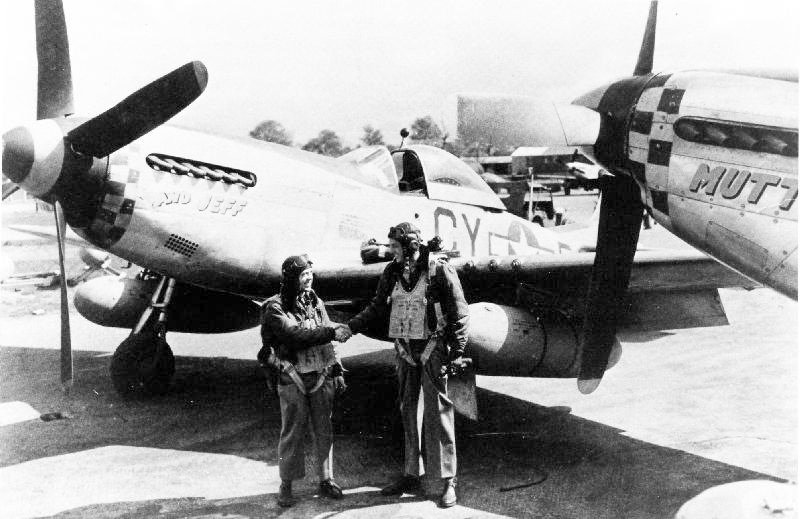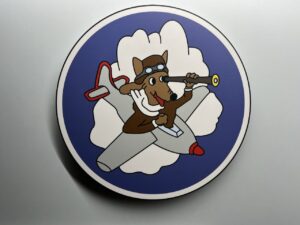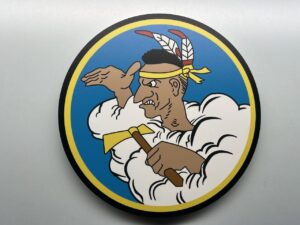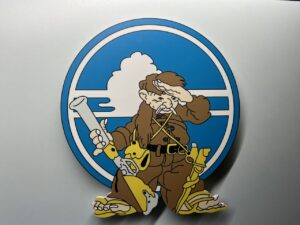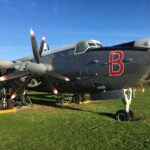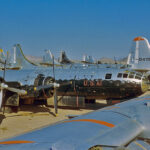Weather was perhaps the major problem facing the Eighth Air Force flying out of England for combat over the European continent. In spite of the efforts of specialists in the weather units,forecasting even a few hours before a planned takeoff was risky at best. Bad weather created major problems for the Eighth Air Force during World War II. Enemy action never caused the Eighth to cancel, recall or abort a mission; dangerous weather conditions did! Out of the 10,631 total missions flown, 6,900 (or sixty-five percent) encountered weather-created hazards.
In the 303rd Bomb Group the weather officer would conclude his mission briefing forecast with “I think: maybe; I hope!“A typical entry into a pilot’s flight diary appears in the mission records kept by 1st Lt. Leslie B. Hull of the 486th Bomb Group.He wrote: *”Mission #26. Flak from IP to target, accurate and heavy. Had several large holes in tail surfaces. No trouble. Flew #3 of high flight in low squadron. Lead of high flight aborted. so flew #3 of lead low. Took off in snow storm: landed just before another snow storm hit the field. Assembled at 21.000 feet above lousy weather. Fair mission all in all.”
Broad area weather reconnaissance could not report rapidly changing local conditions. Accidents occurred and bombs missed targets. One frustrated bomb group commander, Colonel Budd J. Peaslee, of the 384th Bomb Group, developed a plan to allow additional weather reconnaissance on the day of the mission and took it to Major General James H. Doolittle, Commander of the Eighth Air Force. Peaslee proposed selecting lead bomber pilots, who had completed their tours, and training them to fly P-51s. These former bomber pilots were familiar with the concerns of the bomber commander and became his “eyes” thirty minutes ahead of the bomber formation.
The idea was to have special fighter pilots fly out in advance of a mission checking the weather to give an accurate picture to all agencies of what the weather actually was from our bases to the targets and return. They not only gave up-to-date weather information, but reported anything they could observe about other problems the bombers and fighters might encounter. The newly trained P-51 pilots needed the added protection to combat trained fighter pilots. General Doolittle approved the plan with the proviso that It be tried for a short period before Introducing the Scouts into all three Air Divisions of the Eighth Air Force.
Ten former lead bomber pilots and eight fighter pilots formed the Experimental Scouting Force, SF-X, hosted by the 355th Fighter Group at Steeple Morden, England. With Colonel Peaslee in command, his Experimental Scouting force began operations on July 16, 1944. The experimental phase proved successful and on September 6, 1944, General Doolittle’s headquarters issued orders creating a Scouting Force in each of the three Air Divisions. The 355th Fighter Group and flew thirty-five missions through September 12, 1944. The experimental period ended with a re-designation of SF-X to First Scouting Force and assignment to the B-17 equipped First Air Division. Colonel Peaslee took his Scout personnel to the 364th Fighter Group at Honington Airfield, new host for the First Scouting Force. Although the official transfer date was September 21, 1944, Colonel Peaslee flew the Scouts’ first mission on September 19, 1944.
In December 1944, Lt Colonel Allison C Brooks took command of the First Scouting Force in the waning days of the war in 1945, these Scouts transferred to Bassingbourn Airfield and the 91st Bomb Group where they few only four missions before the war’s end. They completed a total of 130 missions with their final one on April 25, 1945, the last day of the Eighth’s strategic bombing campaign. To learn more about the history of the Scouting Force read THIS excellent article by Bill Marshall.







